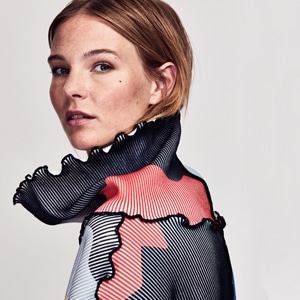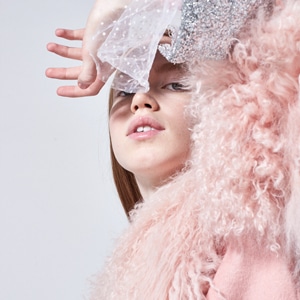
How to work in
As the media landscape evolves, so do the types of roles within it. Fashion journalism is now a broad term that can cover anything from writing for print and digital to creating podcasts, video and social content. As a journalist, you might specialise in features, interviews or trend stories, and when take into account the huge number of media outlets that cover fashion, it’s clear there are many different routes you could take. What is consistent across the discipline, though, is the need to tell compelling stories and a commitment to the journalistic tenets of rigour and integrity.
As well as being a strong writer who’s full of ideas and able to think critically, being digitally savvy is essential (it’s rare to find a journalism role these days that doesn’t have a digital aspect). A head for numbers is also useful, as many journalists spend a lot of time analysing SEO data in order to plan content that will drive online traffic. Interpersonal skills are desirable as you will often be dealing with people, be they interviewees or public relations teams. Here are our tips for getting started.
What to do
It goes without saying that to be a fashion journalist you need to be up to date with the latest developments in the industry, and have an understanding of fashion history. But it’s also vital to be informed about what’s going on outside fashion, too, in terms of culture, society, economics and the arts. This will not only help you put trends into context, it will also make you a stronger writer. Consume all you can, follow industry insiders on social media, and stay connected.
Relevant BA and MA degrees are frequently sought by employers. Subjects such as English Literature or History of Art are helpful, and more specialised degrees such as the Condé Nast College's BA (Hons) Fashion Communication & Industry Practice and MA Fashion Journalism & Editorial Direction will set you on a strong footing. Both courses offer in-depth study of fashion journalism, access to feedback and opportunities from industry professionals, plus the benefits that come with being part of the most renowned fashion media company in the world.
Some of the most successful fashion journalists are are those that have a specialist subject. What aspect of fashion are you most interested in? Fashion business? Street style? Catwalk trends? Sustainability? Beauty? Developing expertise in a particular topic is likely to set you apart from the crowd. The BA (Hons) Fashion Communication & Industry Practice and MA Fashion Journalism & Editorial Direction at Condé Nast College focus on helping you identify your niche and find your unique voice.
Most potential employers will expect to see examples of your past work. This might seem impossible if you haven’t yet been published anywhere – but this shouldn’t stand in your way. The fact is, the best way to start out as a fashion journalist is just to start. Set up a site, blog or channel, and populate it with your own content that demonstrates your skill and fashion knowledge. Sharing your work can help you gain visibility and establish your voice, and potentially even lead to a full-time blogging career, should that be what you want. Either way, your strongest pieces can form the basis of a portfolio.
Though it’s great to be ambitious, not all fledgling fashion journalists can score their very first jobs at Vogue. When starting out, it’s important to keep your eyes open for opportunities with lesser-known publications. Do your research on jobs and paid internships with indie magazines and niche sites, many of which are regularly seeking new talent. To learn more about fashion journalism and get a flavour of the industry, Condé Nast College offers a 5 Days of Fashion Journalism course.



